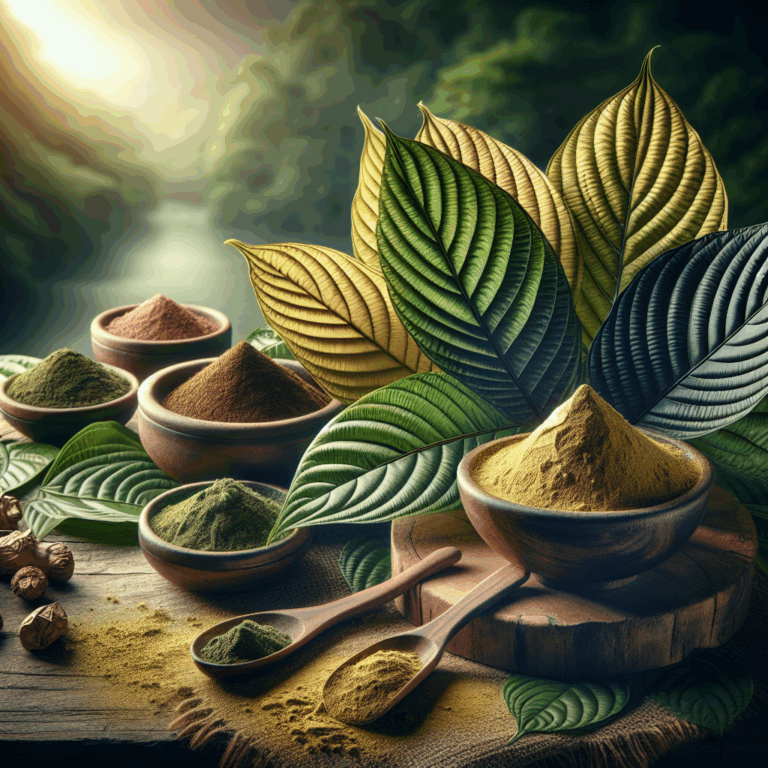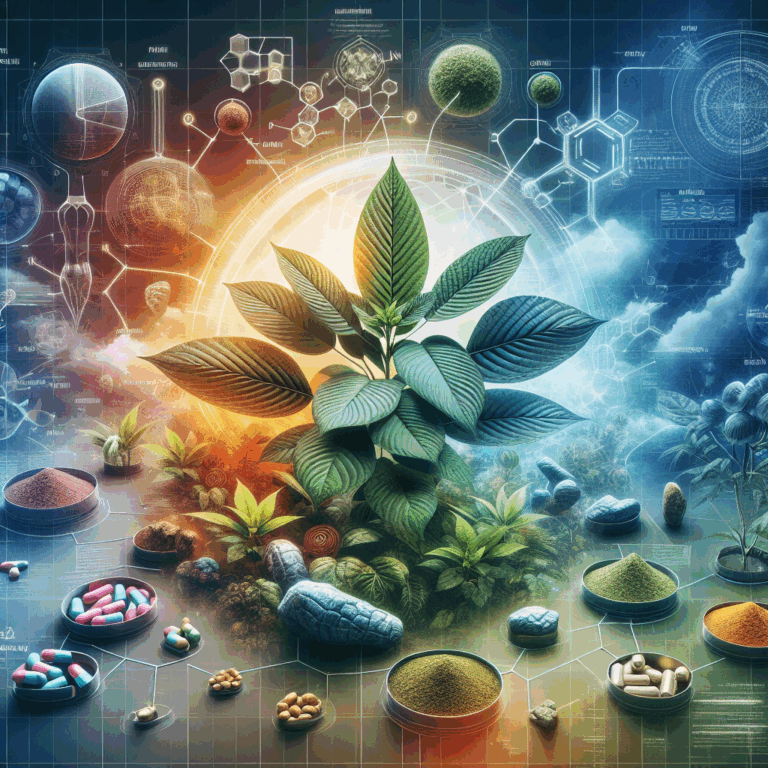
Understanding Kratom: An Overview
Kratom, or Mitragyna speciosa, is a tropical tree native to Southeast Asia. Its leaves have been used for centuries for their stimulant and sedative properties. Many people in Western countries now turn to kratom for relief from various ailments or for recreational use. However, interest in kratom also raises questions about its side effects, particularly skin flushing.
Kratom contains several compounds, including mitragynine and 7-hydroxymitragynine. These compounds interact with the body's opioid receptors, providing effects that range from pain relief to euphoria. Understanding these interactions helps clarify why kratom affects different people in unique ways.
As more individuals explore kratom, there's a growing need to consider its side effects. Skin flushing, characterized by sudden reddening of the skin, has been reported by some users. This natural phenomenon may concern potential users who want to ensure they're making informed choices.
What Is Skin Flushing?
Skin flushing is a temporary event that results in the reddening of the skin, often accompanied by warmth and sometimes itching. It most commonly affects the face but can occur in other body areas. Various factors, including emotions, certain foods, and medications, can cause skin flushing.
When the blood vessels expand, more blood flows to the skin's surface. This increased blood flow can result from physical activities, reactions to substances, or even reactions to temperature changes. Flushing can be harmless in many instances, but understanding its causes is important for maintaining overall health.
Moreover, skin flushing can vary widely from person to person. While some may experience it mildly, others could have more intense reactions. When a substance affects the central nervous system, such as kratom, it's essential to understand what may trigger this response.
How Kratom Affects the Body
Kratom's primary compounds affect the central nervous system, leading to various physiological responses. Users often report pain relief, increased energy, and mood enhancement. However, like many substances, kratom has side effects that can arise from its use.
When ingested, kratom interacts with opioid receptors, which can lead to both stimulant and sedative effects depending on the dosage. Low doses tend to stimulate, while higher doses may produce sedative effects. This dual nature can affect each user's experience differently.
Knowing how kratom works helps users understand its impact on skin flushing. The body's response to kratom might include flushing as a side effect. However, not everyone will experience this symptom, and it can depend on several factors, including individual tolerance, dosage, and the strain of kratom used.
Factors Influencing Skin Flushing from Kratom
Various factors can contribute to skin flushing when taking kratom. Understanding these factors can help users make informed decisions about its use. Here are some key contributors that may lead to skin flushing:
1. Dosage
The amount of kratom consumed plays a crucial role. Lower doses may not trigger skin flushing in many users. Higher doses can increasingly affect the body, leading to vasodilation and flushing.
2. Strain
Different strains of kratom produce variable effects. Red, white, and green strains have unique properties. Some may be more likely to cause flushing than others.
3. Individual Sensitivity
Each person reacts differently to kratom. Factors like genetics, overall health, and even diet can influence how your body processes kratom, contributing to side effects like flushing.
4. Interaction with Other Substances
Combining kratom with other medications or supplements can intensify side effects. If you take other stimulants or alcohol, for example, you may be more likely to experience skin flushing from kratom.
5. Method of Consumption
How you consume kratom also matters. Drinking kratom in tea may have different effects than taking capsules. Each method affects absorption rates and, consequently, how your body reacts.
Identifying Skin Flushing from Kratom
Recognizing skin flushing caused by kratom involves paying attention to symptoms. Symptoms may begin shortly after ingestion and can vary among users. Here’s what to look out for:
- Reddening of the Skin: Notice if your skin turns noticeably red, especially on your face, neck, and chest.
- Warm Sensation: Feelings of warmth can accompany the redness, indicating increased blood flow.
- Itching or Irritation: Some users may experience itchiness alongside flushing, leading to discomfort.
Cortisol and Stress
Stress can exacerbate flushing sensations. When under stress, your body releases cortisol, which can affect blood flow and increase flushing. If you find that your kratom experience coincides with heightened stress, your flushing might intensify.
Timing and Duration
Skin flushing usually appears shortly after taking kratom. Keep track of when symptoms occur to identify patterns. This information is valuable if you decide to continue using kratom or choose a different approach.
Mitigating Skin Flushing from Kratom
Users can take proactive steps to reduce the likelihood of skin flushing from kratom. Here's how to mitigate its effects:
1. Start with Low Doses
If you’re new to kratom, begin with low doses. This cautious approach can help mediate any potential effects, including skin flushing.
2. Choose Your Strains Wisely
Research different kratom strains before use. Some strains are less likely to trigger flushing than others. You may want to consider red vein strains if they have a more calming profile.
3. Monitor Your Environment
Environmental factors can play a role in flushing. For example, avoid taking kratom in hot or stressful situations. Control your surroundings to minimize intense reactions.
4. Stay Hydrated
Adequate hydration is essential when consuming kratom. Water can help regulate body temperature and may reduce flush-related symptoms. Be sure to drink water before and after taking kratom.
5. Recognize Combining Factors
If you’re taking other substances, be aware of how they may interact with kratom. Reducing or eliminating overlapping substances can help you isolate kratom's effects.
The Debate: Is Skin Flushing a Serious Concern?
While skin flushing might seem alarming, it's often a benign side effect. Many users experience it without significant health issues. Nonetheless, it's crucial to listen to your body.
Potentially serious reactions can sometimes manifest. If skin flushing accompanies symptoms like facial swelling, hives, difficulty breathing, or extreme discomfort, seek medical attention immediately. These could indicate an allergic reaction or other complications requiring intervention.
On the other hand, if flushing is mild and doesn’t lead to further issues, it may be merely a common reaction to kratom. The key is to be informed and aware of your body’s responses as you navigate kratom use.
Conclusion
Kratom can lead to various physiological effects, and skin flushing is one of the more common responses. Understanding how kratom affects the body helps users make informed choices. By being aware of factors like dosage, strain, and individual sensitivity, you can reduce the likelihood of experiencing unwanted side effects.
If skin flushing occurs, consider it as part of the body’s natural response. Most users find relief through strategic approaches. Should flushing become bothersome, keep monitoring your kratom intake and consult healthcare professionals if necessary.
FAQs
1. Can all kratom strains cause skin flushing?
Not all kratom strains have the same potential to cause skin flushing. Research different strains to find one that suits you.
2. How can I tell if flushing is from a low dose of kratom?
If flushing occurs at a low dose but doesn't lead to severe symptoms, it's likely a mild reaction. Consider adjusting your dosage.
3. Should I continue taking kratom if I experience skin flushing?
If flushing is mild and doesn’t lead to other issues, it may be safe to continue. However, consult a healthcare provider if you have concerns.
4. Is skin flushing a sign of an allergy to kratom?
Skin flushing can be a reaction but does not necessarily indicate an allergy. Monitor symptoms closely to determine if they worsen.
5. Can combining kratom with other substances increase flushing?
Yes, combining kratom with stimulants or alcohol may intensify flushing. Be cautious with your choices.
6. How long does skin flushing from kratom last?
Flushing usually subsides within a few hours. However, individual experiences may vary.
7. Will hydration help with skin flushing?
Staying hydrated can help regulate your body's temperature and may alleviate some flushing symptoms.
8. Can kratom withdrawal lead to skin flushing?
Kratom withdrawal may result in various symptoms, including flushing. Monitor your body's responses during this time.
9. Are there long-term effects of skin flushing from kratom?
Typically, skin flushing is temporary and doesn’t lead to long-term effects unless it is frequent or causes discomfort.
10. Can diet impact skin flushing when using kratom?
Yes, diet can play a role. Certain foods can trigger flushing. Be mindful of your overall nutrition when using kratom.
References
- National Institutes of Health: Kratom
- American Journal of Health-System Pharmacy: Understanding the Effects of Kratom
- Substance Abuse and Mental Health Services Administration: Kratom Research Summary






